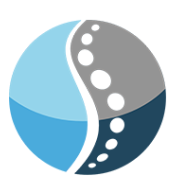February 2020 - by Ross Gemmell
Osteopathy and Physiotherapy have plenty of similarities. They both aim to improve the physical health and quality of life for the patients that they see.
However, what can differ is the way that they go about this and the type of patients that they may see. Whilst there is some crossover and certain conditions can be successfully treated by either professional, it is important you understand the difference between the two as your condition may be better suited to one profession over the other.
Lets have a look at how they differ.
Job Role
Osteopaths are specialists when it comes to dealing with the Musculoskeletal (MSK) system. This means they often see people who are experiencing pain or injury such as; back pain, neck pain, hip pain, sports injuries and muscular spasm. Some Osteopaths also deal with digestive and respiratory ailments.
Physiotherapists work with injuries of the MSK as well, but they also focus on conditions arising from other systems of the body (Neurological, Cardiovascular and Respiratory). This means that they also deal with conditions such as MS, Parkinson’s disease and COPD, or help patients as they recover from a Stroke or Heart attack.
How they work
Osteopaths are trained to develop a highly sensitive sense of touch and use ‘palpation’ to diagnose and treat their patients. This makes Osteopathy a very hands-on profession and they use techniques such as soft tissue massage, joint mobilisation and spinal manipulation to improve the structural and mechanical problems of the body. To complement this, an Osteopath will prescribe home exercises to the patient if they deem it necessary.
Whilst Physiotherapists do use hands-on techniques, it is less so in comparison to Osteopaths, particularly with the NHS. Physiotherapists working in the private sector may use more hands-on techniques, but this is generally dependent on the individual. Physiotherapists will use a wider range of techniques that do not require any hands-on involvement such as exercise prescription, ultrasound, hydrotherapy and electrotherapy to name a few. Physiotherapy is also known as ‘Physical Therapy’, and as a result exercise prescription is often at the core of a patient’s rehabilitation. This means that the patient is encouraged to participate in physical exercise as part of the treatment process.
The philosophy of Osteopathy is that the body is a unit and should be treated as a whole. This means it is common for Osteopaths to treat neighbouring joints and structures if they feel it is relevant to do so. As a result they look for the cause of an issue rather than only treating where the pain is.
For the MSK system, Physiotherapists commonly monitor specific muscle groups and parts of the body rather than the whole body. However, they also believe in taking an holistic approach to dealing with their patients.
Qualifications
Both Osteopaths and Physiotherapists are highly skilled and trained in their own rights, and you should expect an excellent service from whomever you see.
To be an Osteopath you need to have an accredited Osteopathy degree, which usually lasts 4-5 years and also be registered with the General Osteopathic Council (GOsC) by law.
To be a Physiotherapist you need to have an accredited Physiotherapy degree and be registered with the Health and Care Professions Council (HCPC) by law. A Physiotherapy degree usually lasts 3 years, however you can take a 2 year postgraduate Physiotherapy degree if you already obtain a degree in a relevant subject such as; Sports Science, Psychology or Biological Science.
Summary
Osteopathy
Primarily treats the musculoskeletal system (MSK) of the body and injuries/conditions arising from there
Some Osteopaths may treat respiratory and digestive ailments
Primarily a hands-on therapy to detect, treat and prevent dysfunction of the bones, muscles, ligaments and joints of the MSK
Has a wide array of techniques, including but not exclusive to soft tissue massage, joint articulations, spinal manipulations (clicks)
Views the body as a unit and as a whole. Treats neighbouring joints and structures
Holistic approach and treats all joints and areas of the body, looking for the cause of an issue
Trained in diagnosis
Trained to develop a highly sensitive sense of touch (palpation)
A primary complementary or alternative medicine (CAM) not usually offered on the NHS
Requires 4-5 years university degree or masters training in Osteopathy
Registered with the General Osteopathic Council (GOsC) and have their title as an Osteopath protected by law
Physiotherapy
Offers rehabilitation to all the major systems of the body, including MSK, Neurological, Respiratory and Cardiovascular
Is the physical approach to promote, maintain and restore physical health
Involves patient participation in their rehabilitation via physical exercise
A means of restoring balance, independence and strength after severe trauma, injuries and operations
Other techniques such as manual therapy may be used
A course of physiotherapy is typically tailored to the area of the body where the symptoms are
Physiotherapy is freely available on NHS
Requires 3 years university degree training in Physiotherapy
Some Physiotherapists can do a 2 year postgraduate Physiotherapy degree instead if they already have an undergraduate in a relevant subject (i.e Sports Science, Psychology)
Registered with the Health and Care Professionals Council (HCPC)
